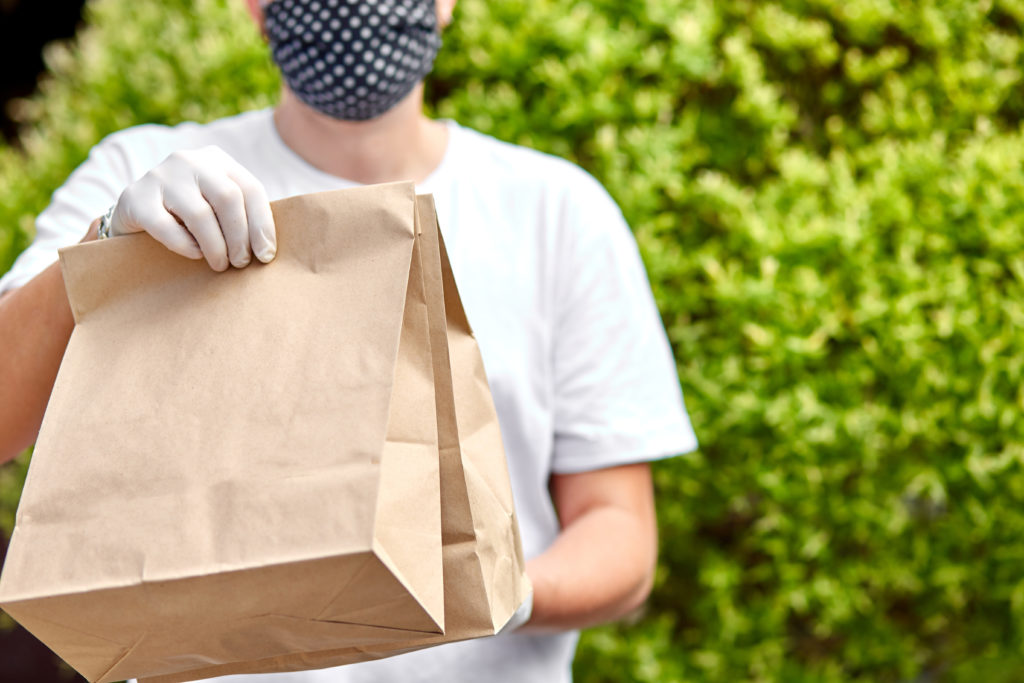It’s no secret that food delivery usage has skyrocketed over the course of the pandemic. With stay-at-home orders and strict guidelines for restaurants, many have turned to food delivery to fulfill cravings, and restaurants that have managed to survive so far have used it as a lifeline. Whether via third-party apps like UberEats, Grubhub and Postmates, or through a restaurant’s independent service, food delivery has some major environmental implications that are often overlooked.
A recent study out of Australia revealed the true cost of food delivery, and not just in terms of service fees. The growing popularity of online food delivery services has increased the use of single-use takeaway food packaging, ranging from plastic to Styrofoam to PFAS-lined brown boxes. The subsequent environmental implications from producing and disposing of those types of packaging are a major contributor to climate change, the study notes.
The influx in food delivery in recent years can be partially attributed to advancements in technology. It has never been easier to order food delivery — all it takes is a smartphone (or even a regular telephone in some cases), a few clicks or dials and some patience. Income and lifestyle changes have also boosted the use of food delivery with fewer people cooking meals at home. And of course, last year’s lockdowns only intensified these factors.
As of this year, some 117 million Americans are now registered users of online food delivery services, an increase of 5.1 percent year-over-year, and these figures are only expected to grow in the coming years. This means more production and disposal of single-use packaging, which requires more energy and raw materials. Their carbon footprint does not end upon disposal — as they break down in landfills or are burned, they release emissions back into the environment.
Related: Mono-PE Flexible Packaging: Protecting Consumer Products While Supporting a Circular Economy
But not all food packaging is created equal. The study quantified how much greenhouse gas is emitted over the lifecycle of five popular food cuisine’s packaging: Indian, Thai, Chinese, pizza and burgers. While the exact packaging used varies per order, restaurant and customer preference (requesting cutlery, napkins, etc.), the study concluded that a burger meal’s packaging emitted the most carbon dioxide. This is likely because a burger meal tends to consist of more individual elements, including paper bags and boxes, plastic straws, liquid paperboard cups with plastic lids and cardboard cupholders.
The study also concluded that Chinese food packaging was the lowest emitter of carbon dioxide, followed by Indian cuisine, pizza and Thai food. Surprisingly, the study found that brown paper delivery bags produce far more emissions than plastic bags due to the carbon released when they break down. On the other hand, plastic bags create far more litter and take far longer to break down than paper bags.
The production of raw materials used in packaging contributed more than half of the total packaging emissions, the study found. The next highest contributor is converting those raw materials into packaging products (between 32 and 48 percent). While a possible solution might be to replace virgin raw materials with recycled content, the study indicated this would only reduce production emissions by about ten percent. Reducing overall packaging use is more effective than increasing the use of recycled content.
One New York City-based startup realized this growing issue and sought to change the standard food delivery packaging. DeliverZero allows users to choose from 100 restaurants in Manhattan and Brooklyn, order as they would through UberEats, Grubhub or any other delivery service, and receive their order without the typical waste that comes along with the food. Orders are packaged in containers that are BPA-free and can be reused more than 1,000 times. Once the order arrives, users are given six weeks to return the containers or swap clean containers with the next delivery order.
While DeliverZero and emerging services like it are helping reduce food delivery’s impact on climate change, federal laws, such as Australia’s ban on the export of unprocessed waste, are likely to be more effective in the long run. And since consumers also play a massive role, online food delivery services should provide them with more options to opt out of bags and utensils. Of course, investment in more reusable or more easily recyclable packaging is crucial.












Join or login to leave a comment
JOIN LOGIN